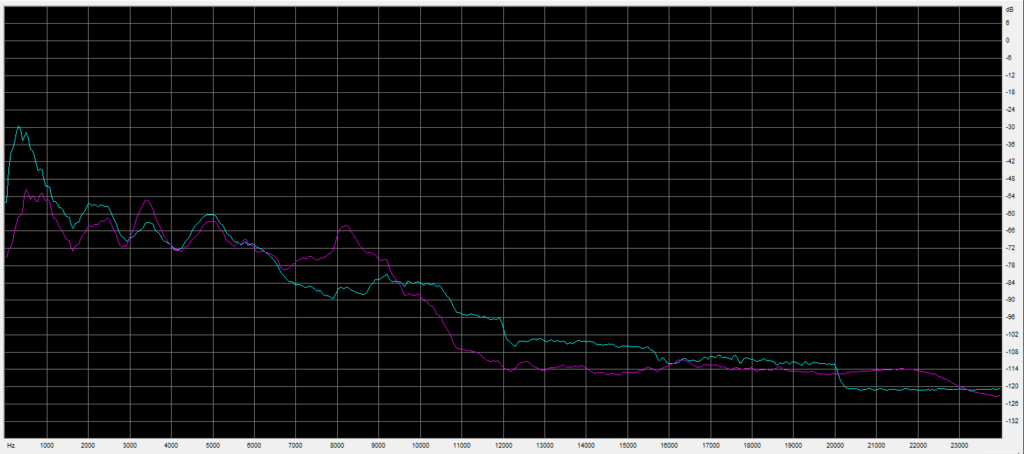VOCAL’s AEC software has many advantages over open source AEC solutions. One advantage is being able to handle unusual echo path responses. When developing the mechanical design of a product utilizing a loudspeaker and microphone, the effects on the acoustic coupling must be taken into consideration. However, often this aspect of the design is out of scope of the project. For example, app developers for Android devices have to support the wide variety of Android phones, and not all of them are properly designed acoustically.
The image below shows the frequency response of the excitation signal(cyan) and the echo signal(magenta).
As it can be observed, the echo return loss between these signals is frequency dependent. At 300 Hz the ERL is -30 dB, and at 8300 Hz the ERL is +21 dB. This is a variance of 51 dB. Nearly all AEC solutions implement their adaptive filter in the frequency domain, but they may not have the frequency resolution to properly coverage the dynamics of this type of response. VOCAL’s AEC solutions have multiple potential frequency resolution options. The proper solution can be selected based on the best tradeoff between latency and convergence. In addition, we can provide support for applying post-process equalization to help flatten the echo response, and we allow for individual control of frequency dependent thresholds for those most troublesome frequencies. Please contact us to learn more on how our AEC can be incorporated into your product design.
